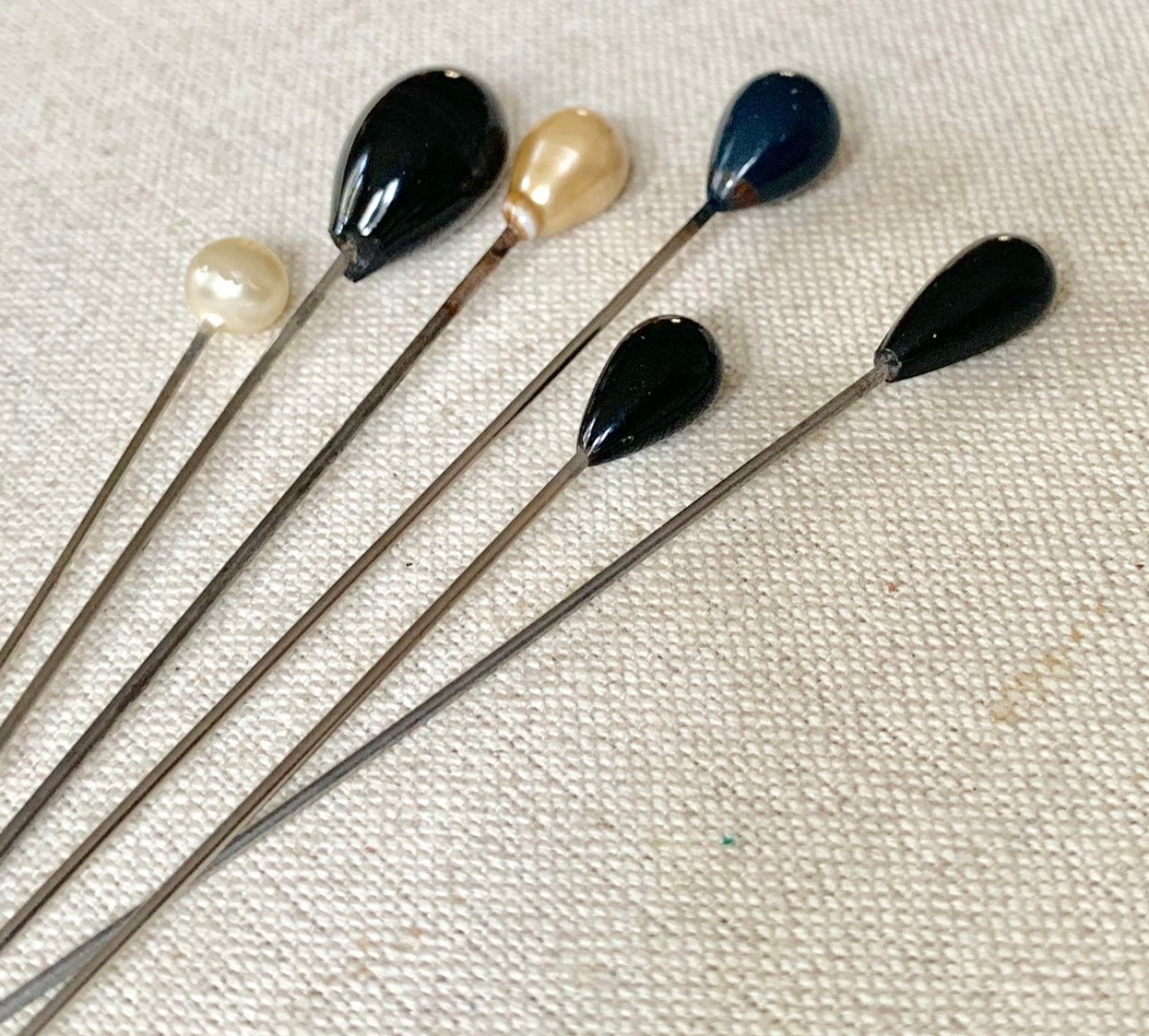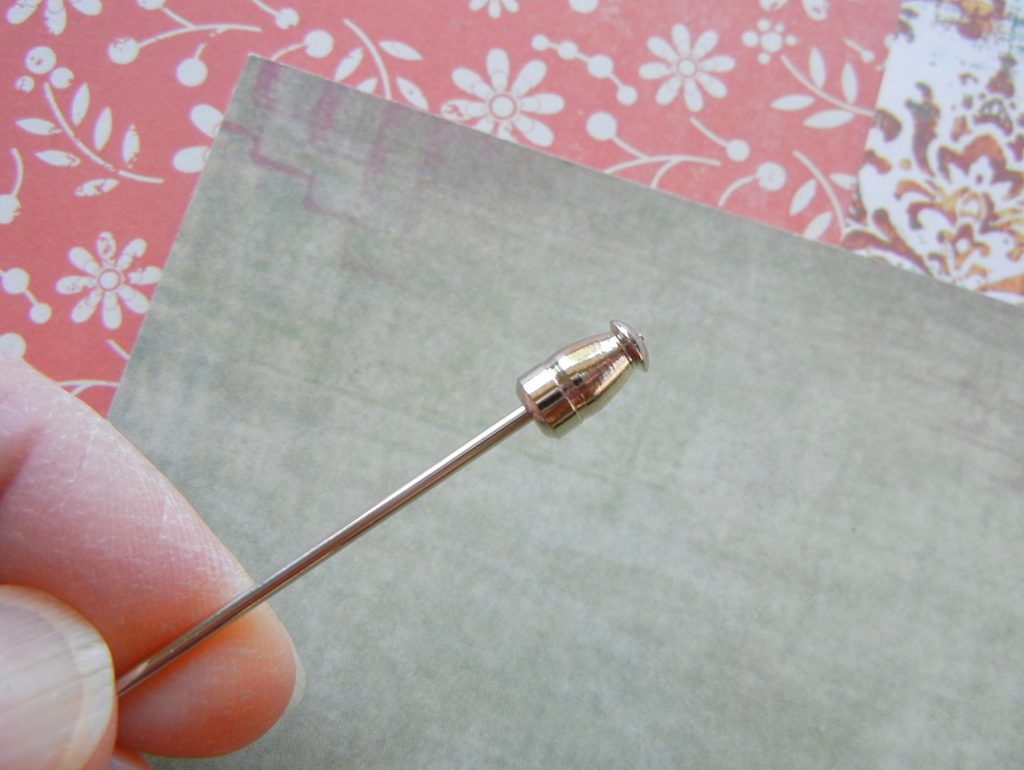
String on 2 wire keepers and space them to match the length of the Mirage bead. String the first three beads on to the hat pin finding: 3.4mm heishi-style metal bead, 3.4mm heishi-style metal bead, and 6mm beaded spacer bead. But no worries, you can use white-rubber earring keepers to keep it firmly balanced on the wire. The “Ocean Pearl” color-changing Mirage bead has a 3 – 4mm hole-a little too large to sit evenly on the 16-gauge hat-pin wire. Plan the design and lay out the beads in your desired pattern.

Large-hole base-metal beads are organized by hole size on the Rings & Things’ website. Rings & Things lists the bead-hole size on each item listing’s detail page Hat-pin findings are made of hardened 16-gauge wire, which requires beads with 1.3mm holes.

3 each earring backs (I used item #33-960).1 each brushed-finish metal bead (I used item #26-815-209).1 each fancy-metal bead (I used item #26-815-108).1 each large-hole rondelle gemstone bead (I used item #21-001-011-03).1 each color-changing Mirage bead (I used item #27-398-01).3 each 6x2mm spacer bead (I used item #49-954-06-AS).2 each 3.4x1mm metal heishi-style beads (I used item #26-233-1).1 each stick pin clutch (I used item #38-850-1).1 each hat pin with head (I used item #38-030-1).Can you have too many beads? I don’t think so.

And the leftover beads will be an inspiration for future projects. They aren’t just for stringing necklaces I used the large-hole beads pictured here to create hat pins. Purchasing beads by the strand is a great value.
Making hat pins free#
Just follow the step-by-step instructions in this free Rings & Things jewelry-making tutorial. You too can make hat pins (whether for personal adornment, weaponry, or both). While the history of hat pins at Rings & Things isn’t as colorful, we have offered the necessary findings for years, and they are still popular. (And yes, there is an American Hatpin Society!) Did you know that all of Rings & Things’ hat pins meet the guidelines set forth by the Arkansas hat-pin ruling of 1909? Curious? You can read about the history of hat pins on the American Hatpin Society’s website.


 0 kommentar(er)
0 kommentar(er)
